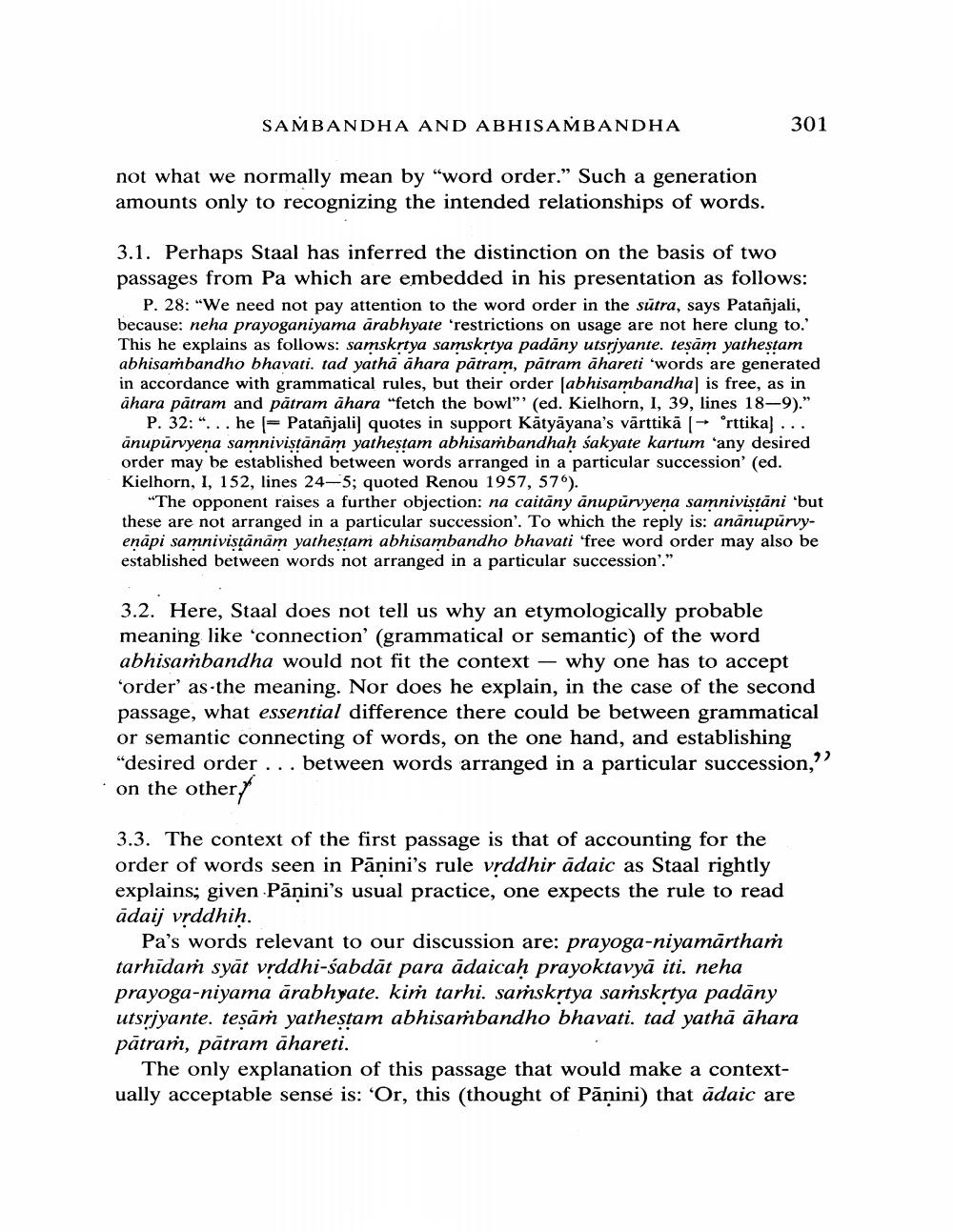________________
SAMBANDHA AND ABHISAMBANDHA
301
not what we normally mean by "word order.” Such a generation amounts only to recognizing the intended relationships of words.
3.1. Perhaps Staal has inferred the distinction on the basis of two passages from Pa which are embedded in his presentation as follows:
P. 28: "We need not pay attention to the word order in the sūtra, says Patañjali, because: neha prayoganiyama ärabhyate 'restrictions on usage are not here clung to.' This he explains as follows: samskrtya samskrtya padany utsrjyante. teşam yathestam abhisambandho bhavati. tad yathā āhara pătram, patram āhareti 'words are generated in accordance with grammatical rules, but their order Jabhisambandha) is free, as in āhara pătram and pătram àhara "fetch the bowl"' (ed. Kielhorn, I, 39, lines 18-9)."
P. 32: “... he = Patañjali] quotes in support Kātyāyana's vārttikā (→ Orttikal ... ānupūrvyena samnivistānām yathestam abhisabandhah sakyate kartum 'any desired order may be established between words arranged in a particular succession' (ed. Kielhorn, 1, 152, lines 24-5; quoted Renou 1957, 57).
"The opponent raises a further objection: na caitāny anupūrvyena samnivistani 'but these are not arranged in a particular succession'. To which the reply is: ananupurvyenapi samnivistānām yathestam abhisambandho bhavati 'free word order may also be established between words not arranged in a particular succession'."
3.2. Here, Staal does not tell us why an etymologically probable meaning like 'connection' (grammatical or semantic) of the word abhisambandha would not fit the context – why one has to accept 'order' as the meaning. Nor does he explain, in the case of the second passage, what essential difference there could be between grammatical or semantic connecting of words, on the one hand, and establishing "desired order ... between words arranged in a particular succession, on the other
3.3. The context of the first passage is that of accounting for the order of words seen in Panini's rule vrddhir ādaic as Staal rightly explains; given Pāṇini's usual practice, one expects the rule to read ādaij vrddhih.
Pa's words relevant to our discussion are: prayoga-niyamārtham tarhīdań syāt vrddhi-sabdāt para ādaicah prayoktavyā iti. neha prayoga-niyama árabhyate. kiṁ tarhi. saṁskrtya saṁskrtya padany utsrjyante. tesāṁ yathestam abhisambandho bhavati. tad yathā āhara pătram, pātram āhareti.
The only explanation of this passage that would make a contextually acceptable sense is: 'Or, this (thought of Panini) that ādaic are




